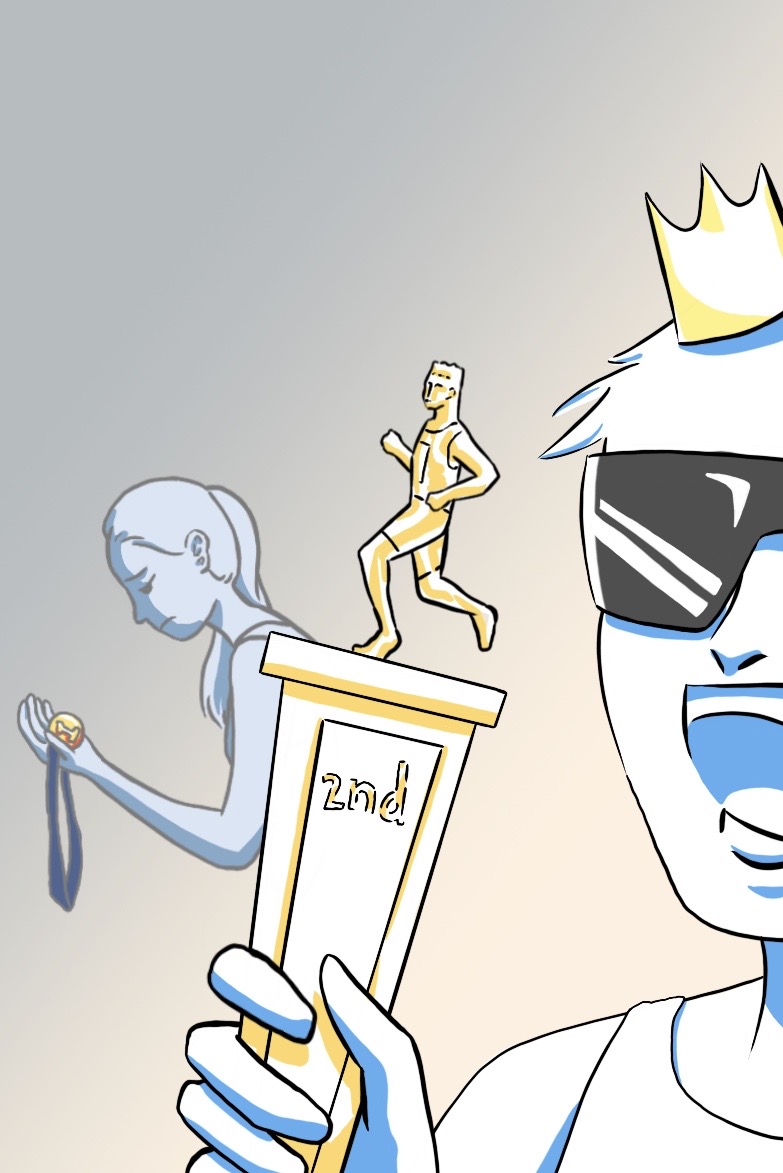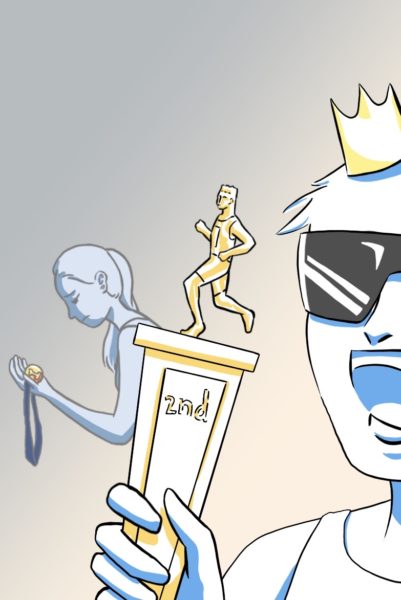

Men’s sports have long been favored since organized sports in schools began to grow in popularity. Until the introduction of Title IX in 1972, a law that prevents schools from discriminating on the basis of gender, opportunities for women in sports were limited. Before Title IX, only 32,000 women participated in intercollegiate sports and 300,000 women in high school sports. After Title IX was introduced, numbers increased to 200,000 and 3 million respectively, with financial aid and funding increasing along with participation. However, big name leagues like the NCAA are still behind in enforcing gender equality in sports.
After the cancellation of March Madness in 2020, basketball was back in action this year with rivalries and upsets playing out in nail-biting games, albeit with COVID-19 restrictions. These limitations, meant to keep players safe, also ended up highlighting a problem that has existed hand-in-hand with sports: gender inequality.
The men’s and women’s tournaments were played in two different venues, each with their own courts and locker rooms. However, not all locker rooms were created equal. In a video that went viral on TikTok, University of Oregon forward Sedona Prince compared the men’s state-of-the-art facilities, which had weight racks with a full range of plates and dumbbells, to the women’s locker rooms which consisted of a single rack of small dumbbells and some yoga mats.
“In a year defined by a fight for equality this is a chance to have a conversation and get better”
Big name athletes like Stephen Curry voiced their concern with the NCAA, and Stanford sports performance Coach Ali Kershner compared the locker rooms on Instagram.
“This needs to be addressed,” Kershner said in a post highlighting the disparity. “These women want and deserve to be given the same opportunities. In a year defined by a fight for equality this is a chance to have a conversation and get better.”
Gender inequality in sports is not unique to March Madness. According to the U.S. Department of Education’s equity in athletics data analysis, in the 2018-2019 school year, Columbia University spent around $12.5 million on their men’s teams and only $6.1 million on their women’s teams, spending 105% more on men’s teams than women’s teams, which is the greatest gender disparity in the Ivy League. The second largest disparity behind Columbia is at the University of Pennsylvania, where 83% more is spent on men’s teams than women’s.
“Columbia University spent around $12.5 million on their men’s teams and only $6.1 million on their women’s teams”
However, some critics argue that Title IX disadvantages male athletes, particularly in schools with less funding at the college level, according to the American Sports Council. Because Title IX calls for strict proportionality, meaning the amount of male and female athletes must be proportional to the amount of male and female students enrolled at the school, the law forces under-funded schools to cut men’s sports to comply with Title IX instead of adding to women’s sports.
According to a study by the American Sports Council, which accounted for the increase of NCAA schools between 1981 and 2005, male athletes per school fell by 6%, and men’s teams dropped by 17% with non-revenue sports like wrestling, tennis, swimming and gymnastics. On the other hand, female athletes per school rose by 34%, and women’s teams per school rose by 34% as well. Since 1995, the number of women’s teams has exceeded the number of men’s teams.
Whether Title IX creates more opportunities for women at the cost of men’s sports or not still remains an ambiguous question, especially with the sports arms race between top Division 1 schools in football and basketball still raging on. These sports take up almost 80% of men’s sports expenses, leaving little money left for other sports. However, significant gender gaps still remain.
A root of the gender equity problem in sports is the lack of leadership positions that women hold. In the WNBA, women hold only 33% of general manager positions, and the International Olympic Committee just recently started requiring that a minimum of 20% of its board members be women. In addition, women hold less than 15% of interscholastic athletic director positions.
Without leadership representation, women’s sports continue to be sidelined. As a result, future generations of female athletes lose motivation.
“If these young athletes see that, then they start to say to themselves, ‘Oh then maybe I shouldn’t do this anymore’ even though this is something that they love,” said senior discus and shot putter Milika Afuhaamango. “It just totally disrupts that system because sports, to me, they were made to get away from all the other stuff that’s happening. They’re something that everybody loves doing.”



